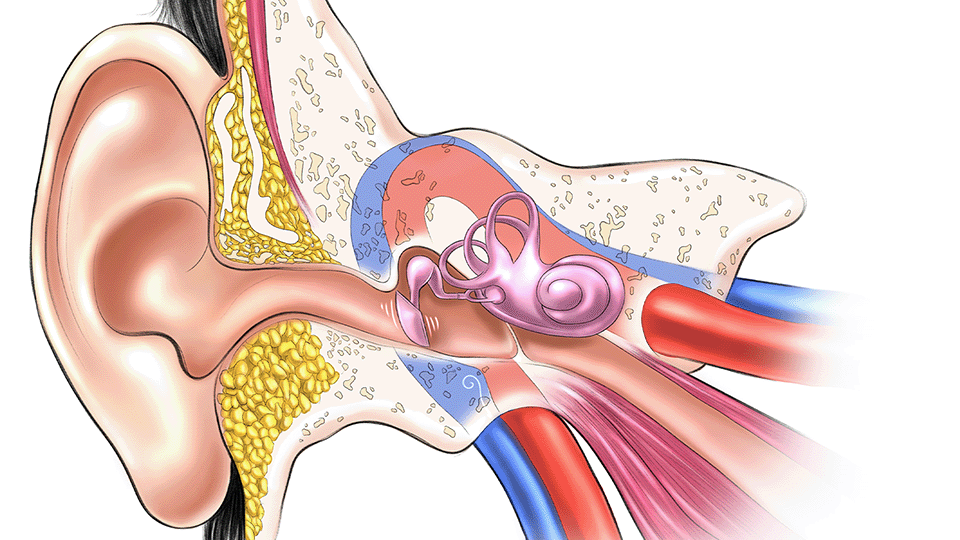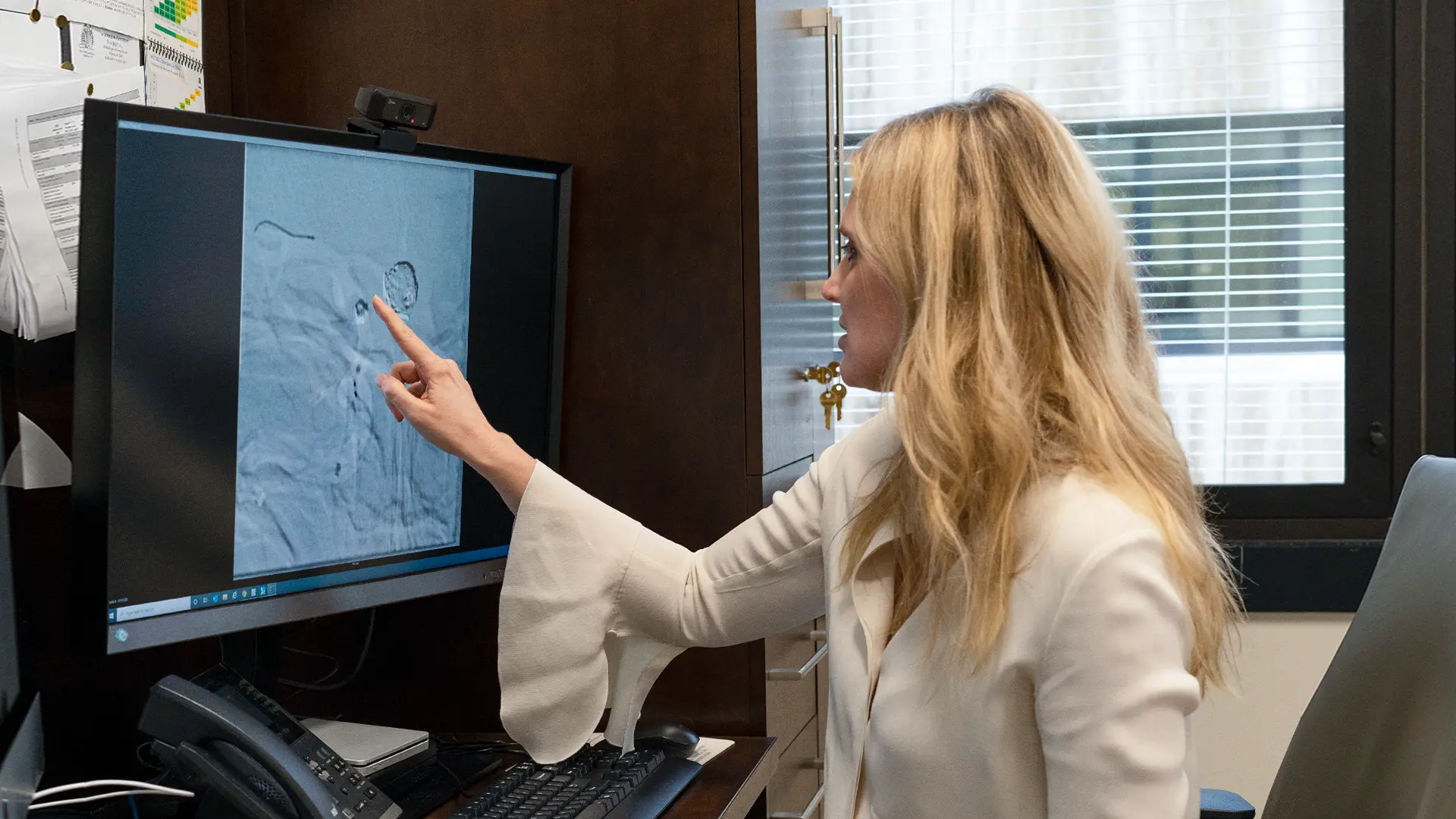Are you hearing your heartbeat in your ear?
Some people can hear their heart beat in their ears, and hearing a noise in your ear in the absence of an external sound is commonly described as tinnitus.
However, there are different types of tinnitus. There are continuous high pitched or low-pitched buzzing or ringing noises that can be either heard in one ear, or both, and those noises are commonly described as ringing in the ears.
Those noises are distinctly different than pulsatile tinnitus.
Symptoms of pulsatile tinnitus include a rhythmic sound that is related to the heartbeat or similar to the heartbeat.
It can be heard either mostly on the right or left, or in both ears, and maybe describes as whooshing sound, swishing, pumping or rushing.
The sound may not be present at all time, and in fact most people are more aware of the noise at nighttime when trying to fall asleep. It can easily be confirmed as pulsatile tinnitus by checking the pulse and determining that the sound is as fast as the heartbeat.

People who have tinnitus often notice that it is more noticeable and bothersome in a quiet environment, for example at night and that listening to other sounds can make it less intrusive.
The deliberate use of any sound to reduce tinnitus awareness or the distress associated with it can be classified as sound therapy. It can be provided with natural sounds, white noise, or gentle music.
There are apps, bedside sound generators, and even hearing aids with supplementary sounds and tones. However, the best way to treat pulsatile tinnitus would be to find a cause, and treat the cause.
With pulsatile tinnitus, the chances of finding a specific cause are more likely than in the non-pulsatile form, but it is still difficult to identify a definite cause.
Tinnitus appears to also be emerging as a rare side effect of the COVID-19 vaccine, and the COVID-19 infection. 1
Pulsatile tinnitus is due to a change in blood flow in the blood vessels near the ear or to a change in awareness of that blood flow. The involved vessels include the large arteries and veins in the neck and base of the skull and smaller ones in the ear itself or very close to the ear.

The blood flow can be altered by a variety of factors:
Generalized increased blood flow
Such as during or after strenuous exercise, pregnancy but also anemia or overactive thyroid (hyperthyroidism) and also with issues on the heart valves.
Localized increased blood flow
Sometimes blood flow is increased in a single blood vessel or group of blood vessels rather than a generalized increase. This can be due to an aberrant artery where blood flows adjacent to the middle ear structures and this can generate a pulsatile tinnitus.
Tumors of the head or neck cause the development of abnormal blood vessels and this can result in pulsatile tinnitus. The majority of tumors associated with pulsatile tinnitus are benign rather than malignant.
Following trauma or infection, an abnormal connection can form between an artery and a vein creating various types of arteriovenous malformations. If that abnormal connection occurs near the ear, the person will hear the pulsations of the blood flow. This condition when diagnosed appropriately can be treated.
Turbulent blood flow
If the inside of a blood vessel becomes irregular due to atherosclerosis (hardening of the arteries) or other injury to the arteries such as a dissection, the blood flow will become turbulent rather than smooth when squeezing through that irregularity.
This flow then becomes noisy in the same way that a smoothly running river will become noisier at a set of a waterfall. Those narrowings typically involve the carotid artery in the neck. High blood pressure can worsen the noise, and an ultrasound of the neck can diagnose this condition.
Turbulent flow can also occur when there is a narrowing in one of the veins that are carrying blood from the head back to the heart. Those veins are quite big and run in the bone hence doctors refer to them as sinus. The sigmoid sinus is a large vein that runs behind the ear and connects to the jugular vein in the neck. If there is a compression of that sinus, then the turbulence can cause pulsatile tinnitus. If that is the case, the person usually only gets pulsatile tinnitus on one side, and not in both ears, and if the head turns to the side of the noise, by turning the chin to the shoulder, the jugular vein gets compressed and the noise goes away. Since this is in general not a comfortable position to be in, this condition can be treated by placing a stent across the compression and thereby propping the sigmoid sinus open.
Some causes of pulsatile tinnitus do not fall into any of the above categories.
In particular, there is a condition called idiopathic intracranial hypertension, also sometimes referred to as pseudotumor cerebri, which is characterized by headaches and visual disturbance as well as pulsatile tinnitus. This is said to occur most frequently in overweight young or middle aged women.
However, it can occur at any age and in men as well as women. Its cause remains unknown.
The Tri-State's leaders in Cerebrovascular treatments.
People with any form of tinnitus will usually go to see an ENT doctor and undergo a hearing test and pulsatile tinnitus is no different in this respect, though pulsatile tinnitus typically does not cause hearing loss.
People with pulsatile tinnitus should undergo medical imaging to look for any of the above conditions. Blood tests may be needed to rule out anemia or thyroid function tests may be requested.
If intracranial hypertension is suspected, the doctor may ask for opinions from other doctors such as ophthalmologists or neurosurgeons who may request their own specialized investigations, such as MR imaging and/or a brain angiogram. 2
Reference:
- Beukes EW, Baguley DM, Jacquemin L, et al. Changes in Tinnitus Experiences During the COVID-19 Pandemic. Front Public Health 2020;8:592878. doi: 10.3389/fpubh.2020.592878 [published Online First: 2020/12/01]
- Nicholson P, Brinjikji W, Radovanovic I, et al. Venous sinus stenting for idiopathic intracranial hypertension: a systematic review and meta-analysis. J Neurointerv Surg 2019;11(4):380-85. doi: 10.1136/neurintsurg-2018-014172 [published Online First: 2018/09/01]

About Dr. Dorothea Altschul
Dr. Dorothea Altschul is an accomplished neurointerventionalist in North Jersey and is the Clinical Director of Endovascular Services at Neurosurgeons of New Jersey, practicing out of their Ridgewood office located on East Ridgewood Avenue.







